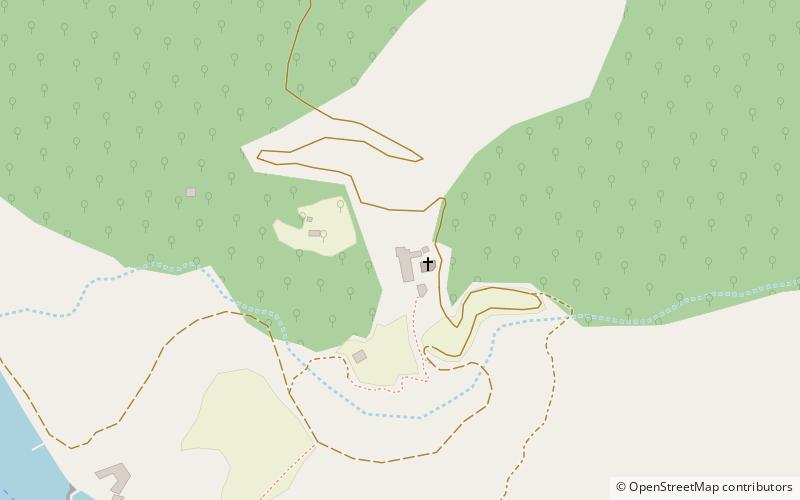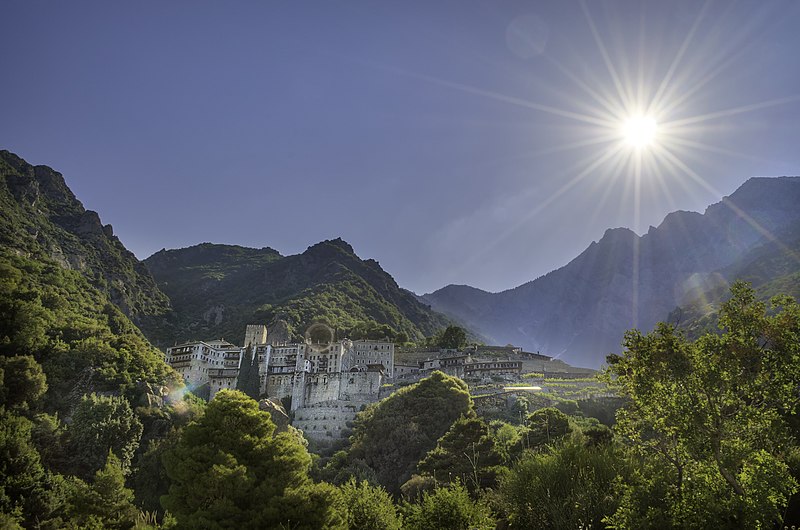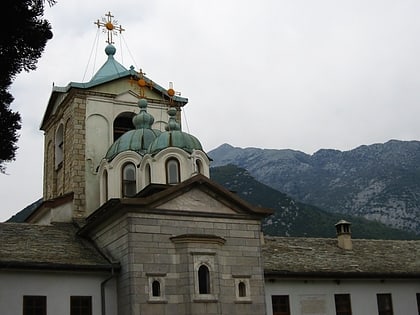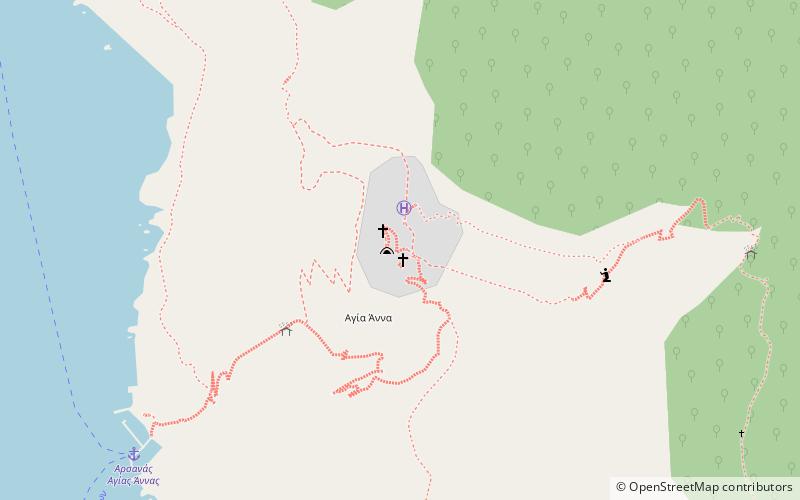Agiou Pavlou monastery


Facts and practical information
Perched on the rocky cliffs of Mount Athos in Greece, the Agiou Pavlou monastery, also known as St. Paul's Monastery, is a spiritual haven and a testament to Byzantine architecture. Founded in the late 10th century, this imposing structure is one of twenty monasteries that form the monastic community of Mount Athos, a UNESCO World Heritage site and an autonomous polity within the Greek Republic.
The Agiou Pavlou monastery is renowned for its religious significance, housing precious relics and a vast collection of manuscripts and icons that date back to its early years. This historical treasure trove includes a piece of the True Cross, on which it is said that Jesus was crucified, making it a significant pilgrimage site for Orthodox Christians worldwide.
Visitors to the monastery can expect to be struck by its serene atmosphere and the stunning views it offers of the Aegean Sea. The architecture of Agiou Pavlou, with its fortified stone walls and red-tiled roofs, blends harmoniously with the natural landscape, creating a sense of timeless tranquility.
Access to the monastery, as with all of Mount Athos, is restricted, and only men are allowed entry, subject to a special permit known as a diamonitirion. The monastic community here follows a strict ascetic lifestyle, with prayer and worship at the heart of daily life.
Agiou Pavlou monastery – popular in the area (distance from the attraction)
Nearby attractions include: St. Panteleimon Monastery, Great Lavra, Simonopetra, Dionysiou Monastery.











